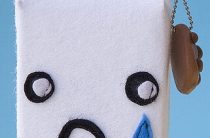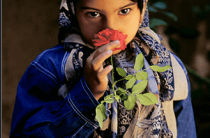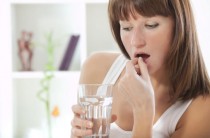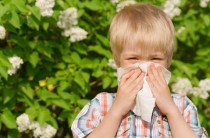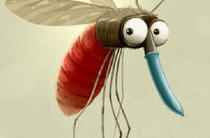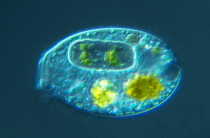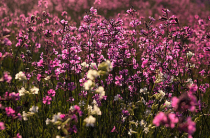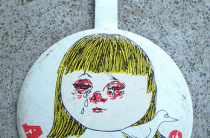With the beginning of spring in people with allergies, signs of hay fever become aggravated. As you know, during this period, many plants begin their flowering and it continues until autumn. Therefore, this time is quite painful. Hay fever has been on the rise lately. This is due to the low level of ecology and insufficient functionality of the human immune system. Allergies indicate a malfunction in the body. Often the cause of the disease can be called incorrect and insufficient functioning of the kidneys or liver.
Signs of hay fever
Pollinosis provokes the pollen of flowering flowers, trees, shrubs. A fairly large palette of its manifestations. Already in the first minutes of being in the field of an allergic focus, the patient will have a cough. Characteristic of this disease is allergic rhinitis and frequent bouts of sneezing. Hay fever will definitely manifest itself in the eyes, in the form of conjunctivitis and lacrimation.
Frequent cases of atopic dermatitis in the form of urticaria or Quincke's edema. Patients also complain of severe attacks of suffocation and shortness of breath. These attacks in the future can lead to bronchial asthma. There are problems with the ears. The patient feels pain and crackling in the ears. All these manifestations prevent you from fully enjoying the varied riot of colors of the warm season.
Causes
Hay fever occurs after pollen gets on the mucous membranes of the nose and eyes, only in the case of a weak protective reaction of the body. An important role is played by heredity. If parents get sick, then in 75% of cases their children will also suffer. If a child has been surrounded by allergens since birth, then he will be at risk. Various viral infections that unsettle the immune system can provoke hay fever.
Significantly increases the risk of living in an urban area. Dry, windy weather favors the spread of pollen. Postponed, often in childhood, surgery to remove the tonsils increases the risks. Flowering plants occur at different times. You must know them to avoid undesirable consequences:
| April May | Alder, poplar, ash, maple, birch, oak, willow, elm, lilac, apple tree. |
| June July | Oats, barley, wheat, rye, timothy. |
| Aug. Sept | Wormwood, ambrosia, quinoa. |
The disease is quite common among children. Pollen simply eats into the mucous membranes and provokes inflammatory reactions. The child has all the symptoms (runny nose, conjunctivitis, cough, itching) without fever. This is the distinguishing feature of pollinosis from a simple ODS.
Plant pollen causes various cross-allergic reactions:
| birch pollen | Apples, apricots, almonds, avocados, celery, carrots, bananas, pears, sweet peppers, cherries, dill, rice, kiwi, nectarine, parsley, peach, strawberries, soybeans, prunes. |
| alder pollen | Strawberries, raspberries, apples, walnuts, celery. |
| grass pollen | Tomato, orange, melon. |
| ragweed pollen | Green pepper, red pepper, watermelon, zucchini, artichokes, banana, cucumber, dandelion, honey. |
| Artemisia pollen | Carrots, cilantro, dill, parsley, sunflower. |
| Mold | Moldy cheeses, all fermented products, penicillin. |
Treatment for hay fever
To successfully get rid of allergies, you need to see a doctor. The allergist will prescribe a series of tests to diagnose the disease. As a rule, these are skin tests and a blood test. After determining the allergen, a course of treatment will be prescribed. The main condition is the exclusion of any contact with the allergen.
Very often, doctors resort to a specific method of immunotherapy. It consists in the introduction of small doses of the allergen, which increase over time. Thus, the body in the initial stages begins to produce antibodies against pollen. But such therapy takes a very long time (from 3 to 5 years).
It is quite difficult to choose the best remedy for an allergy to flowering . A quick and effective way to cure is drug therapy. Among such drugs, antihistamines, nasal drops and sprays, glucocorticosteroids and combined ones are noted. Antihistamines can be divided into first and second generation drugs.
First generation antihistamines
They relieve allergy symptoms well, but not for a long time. They have a sedative effect and with prolonged use can be addictive. Contraindications of these drugs include drowsiness, chronic fatigue, dizziness, dry mouth, nausea and vomiting are possible. The use of these funds is appropriate in the initial stages of the manifestation of the disease. You can note:
| Tavegil | Has antiallergic action. Removes swelling of the mucous membranes. Facilitates breathing. Reduces itching. It is prohibited for use at the time of bearing a child. Children are allowed from the age of six. |
| Suprastin | Removes allergic manifestations. Helps in the fight against rhinitis and conjunctivitis. During pregnancy, it is allowed only under medical supervision. Accepted by children from two years old. |
| Dimebon | Excellent fight against hay fever, allergic conjunctivitis and rhinitis. Significantly reduces itching. Pregnant women and nursing mothers are allowed only on the prescription of the attending doctor. Children are allowed only if the indicated dosages are observed. |
| Diphenhydramine | Removes any allergic symptoms, as well as skin dermatitis. But it is categorically contraindicated in pregnancy and children. |
| Pipolfen | The drug must be administered intramuscularly or intravenously. Recommended for seasonal allergies. It is allowed for children from two months in small doses. Use by pregnant women is prohibited. |
| Astemizol | Eliminates rhinitis, conjunctivitis and skin reactions. Effective in bronchial asthma. Contraindicated in children under 2 years of age and pregnant women. |
| Ketotifen | It is used to prevent asthma attacks, allergic bronchitis, hay fever complications, allergic rhinitis and conjunctivitis, allergic dermatoses. |
Second generation antihistamines
They retain the effect of the application for a longer period and do not have a pronounced sedative property. Quality drugs in this group include Claritin, Bronal, Histadil, Astemisan, Zirtek, Semprex. But often there are side effects such as convulsions, heart palpitations, sleep disturbances.
| Zyrtec | Relieves itching, sneezing, nasal congestion, hives. Contraindicated during breastfeeding and pregnancy. |
| Claritin | It quickly removes allergic manifestations. The effect persists throughout the day. It is allowed to use during pregnancy only under the supervision of a physician. |
| Bronal | Eliminates seasonal allergic rhinitis and conjunctivitis. Removes skin manifestations of allergies. Prohibited for children under two years of age and pregnant women. |
Recently, third-generation antihistamines have been invented. These medicines do not have a sedative effect and are absolutely safe. They are allowed to be used by people suffering from heart disease. The use of this drug does not depend on food intake. The most popular among them is Telfax. Already after one tablet, puffiness will noticeably decrease, breathing will improve and lacrimation will pass. Children are allowed from the age of six. Erius can be noted as the next drug in this category. Perfectly removes manifestations of hay fever. Even one year olds are allowed.
Nasal drops and sprays
With severe allergic rhinitis, nasal drops should be used. It is necessary to use these drugs in combination with others, as drops relieve nasal congestion, but do not eliminate other symptoms. Antihistamine drops block the release of histamine but are not effective enough in severe cases. These include:
| Levocabastin | Helps in the fight against allergic rhinitis and conjunctivitis. Frees the upper respiratory tract from sputum. Limited in use during pregnancy. Contraindicated in children under six years of age. |
| Allergodil | Available in the form of a spray. It is prescribed during the period of seasonal allergies. Reduces sneezing attacks. Contraindicated in children under 6 years of age. Pregnant women are allowed under strict medical supervision. |
| Cromohexal | Effectively facilitates breathing. Pregnant women, using it, should be under the strict supervision of a doctor. |
Drops such as Nazivin and Naphthyzin are vasoconstrictor and are used for acute manifestations of allergic rhinitis. Effectively relieve swelling of the nasal mucosa. But for a long time their use is prohibited, because there is a drying of the mucosa. Doctors do not recommend their use in the treatment of children.
Deratin is a drug of the immunomodulatory group. This group helps to stimulate the protective reactions of the body, improves immunity. A remedy such as IRS 19 stabilizes membranes and is prescribed for both treatment and prevention of hay fever.
Combined preparations will help to quickly achieve a positive effect. This group relieves swelling and inflammation of the nasal mucosa, has an immunomodulatory property. These include:
| Sanorin | Facilitates nasal breathing. Reduces swelling of mucous membranes. It can be used both nasally and ophthalmic. Allowed for children from the age of two. It is not allowed to take during the period of bearing a child and breastfeeding. |
| Vibrocil | Eliminates swelling of the mucosa, clears the nose, making breathing easier. Do not apply to children under 6 years of age and women during pregnancy. |
Glucocorticosteroids
Preparations of this group effectively relieve inflammatory manifestations, are prescribed topically in the form of ointments.
| Panthenol | Stimulates skin regeneration, relieves itching and swelling. It is allowed to use during pregnancy as prescribed by a doctor and children from two months of age. |
| Fenistil | Available in the form of a gel. When used, it relieves itching, redness, irritation. During pregnancy, it is allowed only in the first trimester. Children are allowed from 1 month. |
| Advantan | Removes manifestations of dermatitis and puffiness. It contains hormones that contribute to a quick recovery. But it is forbidden for pregnant women and nursing mothers. |
| Gistan | The drug is prescribed for the treatment of allergic skin manifestations. When applying this cream, itching and redness of the skin is reduced. Prohibited for use by pregnant women. |
| Elidel | It has an anti-allergic effect. Does not contain hormones. Allowed for children from 3 years. During pregnancy, it is allowed only as directed by a doctor. |
| Thymogen | Stimulates skin regeneration, eliminates inflammatory processes. Contraindicated during pregnancy. |
| Skin cap | Zinc-containing drug. It is prescribed for atopic dermatitis or other skin manifestations of allergies. Allowed for women during pregnancy. |
Folk methods of treatment
Many are afraid to use folk methods in the fight against the disease. But if you approach this issue correctly, wisely and know your allergen, you can avoid cross-reactions and choose the best remedy for flowering allergies. To ease your nasal breathing, use drops of infusion of chamomile, garlic, yarrow. After their use, there is an outflow of mucus. Many people help to overcome allergic rhinitis by breathing over the vapors of ginger broth. To do this, brew grated ginger root. After breathing on its vapors, add lemon to this decoction-tea and drink it. This helps to clear the airways well.
If you do not have sensitivity to St. John's wort and wormwood, then take decoctions of these herbs. Pour two tablespoons of the herb into a glass of water and boil for 30 minutes. Let cool and infuse. Then add another glass of boiled water to the strained broth. It is advised to drink three times a day, 100 grams half an hour before meals.
Often with pollinosis, an onion drink helps. To do this, pour four chopped onions with chilled water and insist overnight. This drink should be drunk throughout the next day. The best panacea for hay fever is celery root juice. It should be consumed three times a day, two teaspoons. The nose is washed with ordinary saline solutions.
It will not be superfluous to follow a hypoallergenic diet. The right lifestyle is the key to success. The diet should be saturated with vitamins and all the necessary trace elements. A good remedy for hay fever is oatmeal, or rather a decoction of it. To do this, you need to pour 200 grams of porridge with two liters of boiled hot milk. All this insist during the night and strain the next morning. This infusion should be drunk all in a day. The decoction will help the body get rid of toxins and thereby relieve some of the symptoms of hay fever.
Breathing exercises can be called quite effective. These simple manipulations will get rid of stagnation in the bronchi. You need to take a breath, while inflating the stomach. And on the exhale, on the contrary, it is necessary to retract it. You need to inhale through the nose and exhale through the mouth. Another exercise advises to inhale deeply, and then exhale sharply, without delay.
